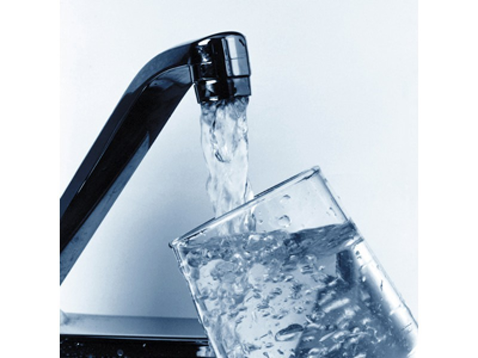World Water Day
Many of us know that April 22 is Earth Day, but did you know that March 22 is designated as World Water Day? Either of these days can be considered for a Men's Club activity, but you can also do so any time of the year. For an article and video on Charity: water celebrates World Water Day with 407 awe-inspiring human profiles follow this link.
Protect vs Use: Jewish Footprints on the Land
Humans can live without food for weeks but die without water after four or five days. Does your state government assure that your public water supplier delivers clean water?

If you receive your potable water from a public water supplier, the water should meet the federal Safe Drinking Water Act and Lead and Copper Act regulations. Public water systems test water quality when at the plant and at sites throughout the distribution. The regulations do not apply inside homes, businesses, public buildings or schools. Your state has Safe Drinking Water Act Primacy. Therefore the state is responsible for assuring that the production, distribution and the analysis of the water meets the requirements and quality of the regulations. The water is “clean” when it reaches the curb. Several states have expanded the protection with their own regulations.
Lead in Drinking Water has been in the news headlines for several weeks. Building constructed before 1986 have copper water pipes connected with solder. Lead pipes were use before 1930’s. Flint, Michigan water problems were due to the failure of the Michigan Safe Drinking Water Primacy Program.
As STEWARDS OF THE LAND Men’s Clubs should sponsor programs to inform their congregation about water quality and the need for State regulations.
The federal Safe Drinking Water Act and Lead and Cooper Rule (1970’s) are administered by the federal EPA Office of Safe Drinking Water ("OSDW") to assure the regulation and safety of Public Water supplies. A public water supply has 15 connections and serves 25 people. There are two major parts; oversight of the Public Water Supplies and oversight/ certification of the laboratories that analyze the water samples. The country is divided in to 9 regional EPA Offices. To received federal funds the states accepted Primacy, responsibility for implementing and enforcing the Acts and Rules. Forty nine states established a Primacy water Laboratory (Dept. of Health) and OSDW office. Since the State primacy Laboratory does not have the capacity to analyze all the water samples, they establish a system to certify private labs based on EPA requirements. The Regions inspect/audit and check the states in their regions to assure compliance. Since many states are densely populated, the drinking water requirements are often stricter than the federal requirements. The National OSDW checks the regions. The rules apply to the water delivered to the curb. The property owner is then responsible. The regulations do not apply to homes, businesses, public buildings or schools receiving Public System water. Some cities and county health department have additional requirements.
Lead in drinking water leaches from the lead solder used to connect copper pipes in homes and facilities built before 1986. Detectable Levels of lead can occur when the water sits in the pipes overnight and/ or the water is acidic. For delivered water the pH limits are 6.5 -8.5 (7 neutral, less than 7 acidic, greater 7 basic). Public water systems in urban areas usually treat the water to maintain the pH above 7.
Note: In urban areas, LEAD paint in homes built before 1960 is the greatest health hazard to young children, because the lead makes paint chips taste sweet.
Information about public and community water systems is available by federal rule in an annual report often sent with a bill. Detailed information based on reports filed by the water systems with the state OSDW is available from the State Health or Environmental Departments. For example, New Jersey Department of Environmental Protection OSDW has a specific website.
Men’s Club Programs and Activities
- Sponsor a Water Quality information program for the congregation and/or community. Inviting representatives from your Public Water Utilities, Health Department and a representative form an analytical drinking water laboratory.
- Arrange a similar program for your Hebrew School, Kadima and USY.
- Arrange a trip to a Public Water Utilities Plant.
- Program: What is my city’s/state’s performance record on enforcing the Safe Drinking Water Act and the Lead and Copper rule? What parameters are tested? Are there programs to test water quality in schools and public facilities?
EPA web site: https://www.epa.gov/dwreginfo/forms/contact-us-about-drinking-water-requirements-states-and-public-water-systems
Policy organization: http://www.cleanwaterfund.org
